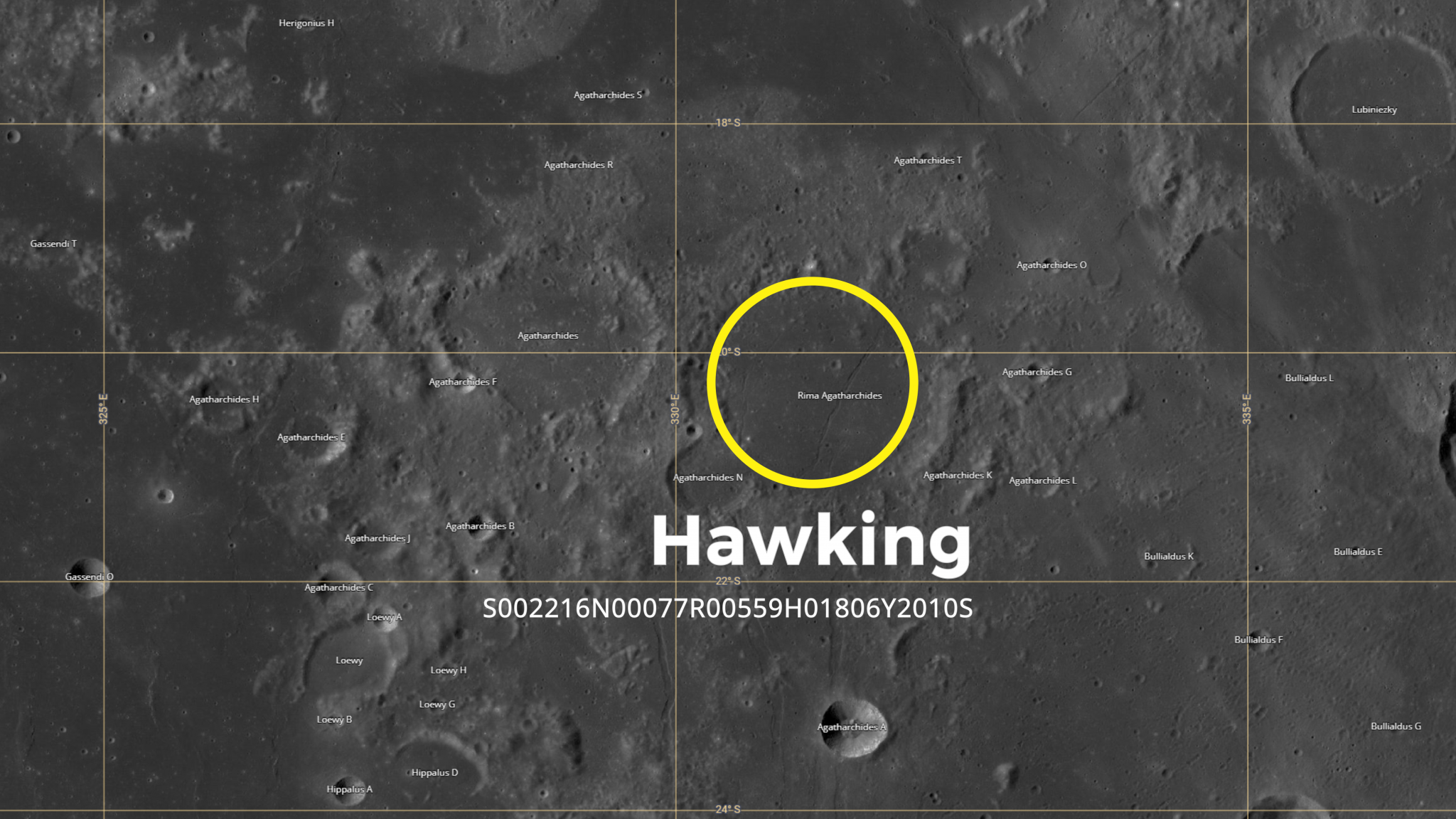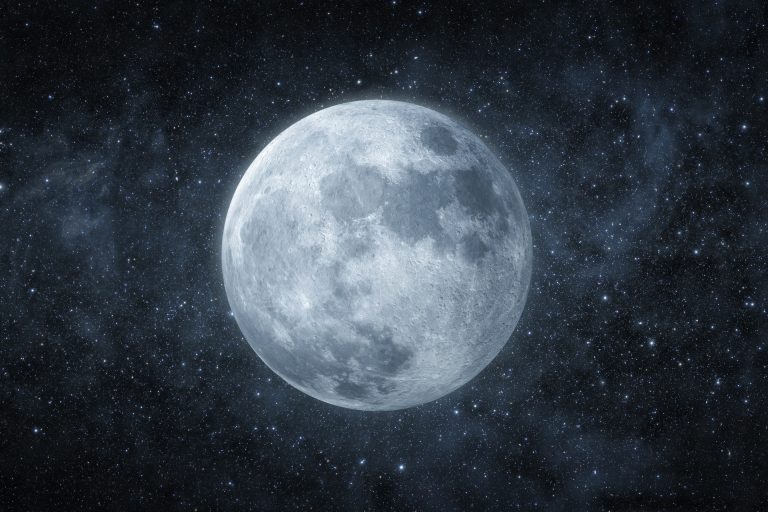Geneva, Switzerland (12 June 2023) – The International Lunar Geographic Society (ILGS), headquartered in Geneva, Switzerland, has today announced a significant addition to lunar nomenclature. A large and notable crater, previously known as Agatharchides P, has been officially renamed to honour the life and work of the late eminent theoretical physicist and scholar, Professor Stephen Hawking.
The Stephen Hawking Crater
The newly renamed Stephen Hawking Crater is located in the Regio Agatharchides (Agatharchides Highlands), situated on a peninsula between Mare Nubium and Mare Humorum on the Moon. With a location at -20.231250 (latitude) and -28.793750 (longitude), this lunar formation presents an impressive diameter of 65.980 kilometers.
Unusually, this “satellite” crater is larger than its “parent” formation, the main crater in the group named for the Greek geographer Agatharchides of Cnidos, which measures approximately 52 kilometers in diameter.

The Stephen Hawking Crater, one of a series of 17 craters originally named after Agatharchides, is distinguished not only by its considerable size but also by the remarkable features it hosts. The 55-kilometer long Rima Agatharchides, a dry “river bed,” weaves its way diagonally through the heart of the formation, while the Crater Agatharchides N disrupts the southwestern rim of the newly renamed crater.
A Brief History of Professor Stephen Hawking
Stephen William Hawking was born in Oxford, United Kingdom, on 8 January 1942. His education began at St Albans School, leading him to University College, Oxford, where he studied physics and graduated with first-class honours. Later, he enrolled at Trinity Hall, Cambridge for postgraduate research in cosmology.
Hawking’s early career was characterised by incisive work on singularities, regions in spacetime where gravitational forces become infinite. His work with Roger Penrose laid the groundwork for the modern understanding of black holes. In the mid-1970s, Hawking proposed what would become one of his most famous theories: that black holes are not completely black but can emit subatomic particles, now known as Hawking Radiation.

Despite a medical prognosis in his early 20s predicting a short lifespan due to a rare form of motor neurone disease, Hawking continued to contribute ground-breaking ideas to the realm of theoretical physics.
The publication of his book “A Brief History of Time” in 1988 elevated Hawking to a global stage. The work remains one of the most successful popular science books, having sold over 25 million copies and having been translated into 35 languages.
Hawking’s ability to communicate complex scientific theories to the general public, coupled with his steadfast determination and undeniable intellect, made him an iconic figure in popular culture.
He made guest appearances in several popular television shows, including “The Simpsons” and “Star Trek: The Next Generation”, further embedding his influence and reach. Hawking’s life and work were portrayed in the 2014 biographical film “The Theory of Everything”, which received worldwide acclaim.

The designation of a crater in honour of Professor Stephen Hawking is a fitting tribute to a man whose profound contributions to science and society have left an indelible mark.

Stephen Hawking Crater
Latitude: -20.231250
Longitude: -28.793750
Diameter: 65.98 kilometers
Location: Agatharchides Highlands
IAU Designation: Agatharchides P
ILGS Catalogue No: S002216N00077R00559H01806Y2010S
SOURCE: ILGS Press Release





